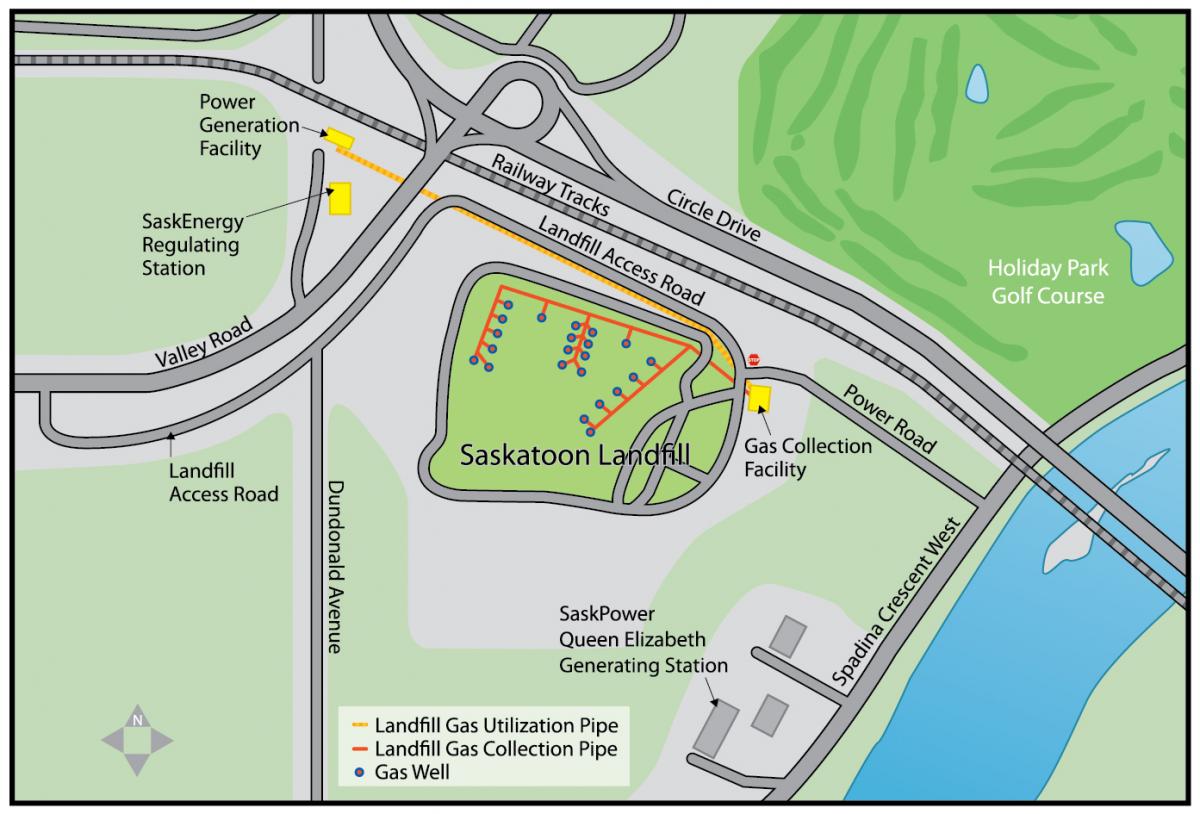Landfill Gas Collection & Power Generation System

The City of Saskatoon has a long rich history of generating electricity. The municipal electric utility was started in 1906, with a small generating plant of 225 kilowatts located on the riverbank at Avenue H and 11th Street. By 1911, the City started its second plant on Avenue A south of 19th Street. In 1928, the City sold its power assets to the Saskatchewan Power Commission, ending electricity generation by the City, until 2014 when the City opened the Landfill Gas Collection & Power Generation System. The Landfill Gas Power Generation Facility is the first power generation facility to be built by the City in over 100 years. Saskatoon Light & Power is committed to returning to our generation roots, developing and implementing new ways of generating power that provide benefits to our customers, the environment, and the City.
The Landfill Gas Collection & Power Generation System began operation in 2014 and is operated by the City of Saskatoon. The key benefits provided to the City include:
- Reduction of Greenhouse Gas (GHG) emissions by over 50,000 tonnes per year - equivalent to removing over 10,000 vehicles from our roads each year.
- Production of renewable electricity that is enough to power approximately 1,200 homes each year.
- Improvement of air quality and reduction of odours at the Saskatoon Landfill.
- Creation of approximately $1.3 million in annual revenues for the City from the sale of power generated to SaskPower.
Details on the Landfill Gas Collection & Power Generation System
The system consists of two facilities that work in conjunction to produce electricity from the City's Landfill Gas: the Collection Facility and the Power Generation Facility. The Collection Facility is made up of vertical wells drilled into the waste in the landfill, and underground piping connected to a vacuum compressor to collect the gas that is produced. The landfill gas is then piped to the Power Generation Facility where the gas is combusted in engine-generators sets to generate electricity.
This illustration shows where the facilities are located at the Landfill.

About five million tonnes of municipal waste are now in place at the Saskatoon Landfill. As organic waste decomposes, it produces landfill gas that contains almost equal parts methane and carbon dioxide. If this gas is not collected, it is emitted into the atmosphere and adds to the overall greenhouse gas emissions in our community. Methane gas is about 25 times more harmful to the atmosphere than carbon dioxide.
The collection process involves covering or "capping" a section of the landfill with clay, drilling vertical wells into the waste and connecting them with underground piping. Vacuum compressors then capture the gas and pipe it to a blower/flare station, where it is either piped to the power generation facility or combusted in a flare. During the combustion process, the methane is converted to carbon dioxide, a less harmful gas. While effective at reducing methane gas emissions, ending the process at this point makes no use of the heat energy that is produced during the conversion. After the gas is collected, it is piped to a power generation facility and combusted in two engine-generator sets to generate electricity.
The revenue generated from the sale of the energy to SaskPower will be used to pay for the project. Thereafter, all profits will go back to the City for use in developing additional green power generation projects.
